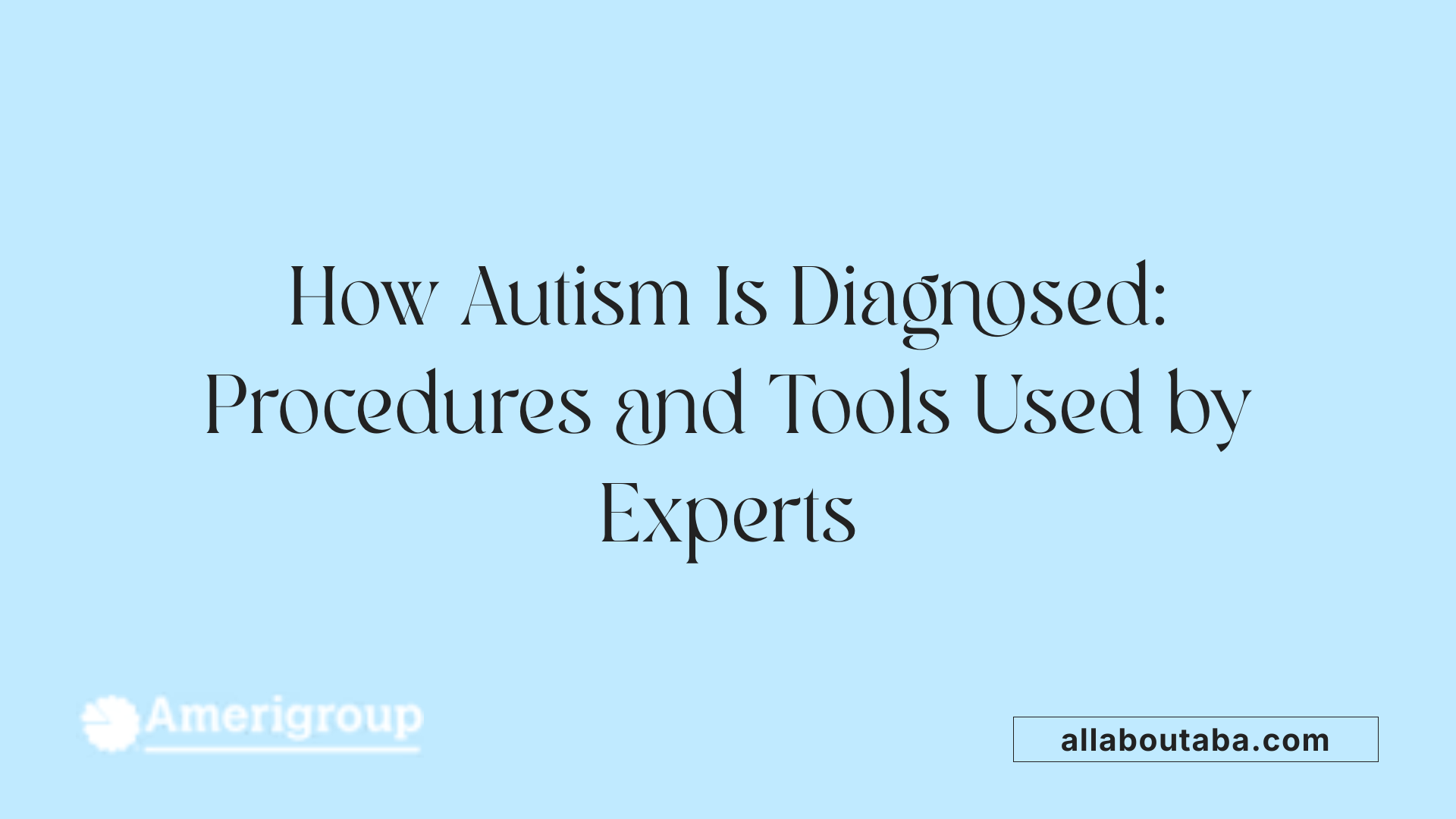Unveiling Autism Spectrum Disorder (ASD)
Autism Spectrum Disorder (ASD) is a complex, lifelong neurodevelopmental condition that influences how individuals perceive, communicate, and interact with the world around them. As awareness increases, understanding the characteristics, causes, diagnosis, and support options becomes vital for fostering acceptance, early intervention, and improved quality of life for autistic individuals and their families.
What Is Autism Spectrum Disorder?

What is autism?
Autism, or autism spectrum disorder (ASD), is a lifelong neurodevelopmental condition that influences how individuals perceive and interact with their environment. It involves differences in brain development that impact communication, social skills, and behavior.
Characteristics and presentation
People with ASD often display challenges in social communication, such as avoiding eye contact, responding slowly to their name, or difficulty understanding social cues. Repetitive behaviors like lining up objects, repeating gestures, or having intense focus on specific interests are common.
Sensory sensitivities are also prevalent, meaning some individuals may be overly responsive or under-responsive to sights, sounds, tastes, touches, or smells. The spectrum nature of autism means that symptoms can range from mild to severe, and each person has a unique set of strengths and difficulties.
Signs usually begin to show in early childhood, sometimes as early as 6 months, and diagnosis often occurs around age 2 or 3 through behavioral observations and developmental history. While autism cannot be cured, early intervention strategies—including behavioral therapy, speech and occupational therapies—can support individuals in managing challenges and improving their quality of life.
Understanding autism
Autism is not a disease but a natural variation of human neurodiversity. It often coexists with other health conditions such as anxiety, ADHD, or gastrointestinal issues. Recognizing and accepting these differences helps promote inclusive environments where autistic individuals can thrive.
Recognizing the Symptoms and Signs of Autism

What are the main symptoms of autism?
Autism spectrum disorder (ASD) presents with a variety of signs primarily related to social communication, repetitive behaviors, and sensory sensitivities. A core feature is difficulty in social interactions, including avoiding eye contact, challenges in interpreting facial expressions or body language, and problems in developing or maintaining friendships. Children may not respond to their name by early infancy or may show little interest in sharing experiences.
Repetitive and restricted behaviors are also prominent. These can involve lining up toys, repeating words or phrases (echolalia), and insisting on routines or sameness. Such behaviors often reflect a need for predictability and can include intense interests in specific topics or objects.
In addition, delays or differences in language development, such as poor speech or non-verbal communication, are common. Movement differences, like unusual gestures or body movements, alongside sensory sensitivities—such as hypersensitivity to sounds, lights, textures, or tastes—are also typical signs.
Beyond childhood, some individuals may experience emotional regulation issues, fine motor challenges, and a strong preference for routines and sameness. These signs often start to emerge in early childhood, sometimes as early as 6 months, and can suggest the presence of ASD. Early recognition of these symptoms is vital, as intervention options like behavioral therapy and speech therapy can significantly improve quality of life and long-term outcomes.
Diagnosing Autism Spectrum Disorder

How is autism diagnosed?
Autism spectrum disorder (ASD) is diagnosed through a thorough clinical process that involves various assessment procedures. Since there are no biological tests like blood work or brain scans to confirm autism, diagnosis depends largely on behavioral observations and developmental histories.
Assessment procedures
The process begins with collecting detailed developmental information from parents or caregivers. This history helps professionals understand the child's early development, language milestones, social skills, and repetitive behaviors. They look for signs such as delayed speech, limited eye contact, and difficulties in social interactions.
Behavioral observation tools
Trained specialists use standardized behavioral observation tools to evaluate the child's behaviors. Commonly employed assessments include the Autism Diagnostic Observation Schedule (ADOS-2), which measures communication, social interaction, and play behaviors through structured activities. Other tools like the Childhood Autism Rating Scale (CARS) and screening questionnaires such as the Modified Checklist for Autism in Toddlers (M-CHAT-R) also assist in identifying autism traits. These instruments provide a systematic way to observe behaviors relevant to ASD diagnosis.
Developmental history
A key component of diagnosis is the developmental history, documenting milestones such as response to name, language development, play skills, and social engagement. This history helps differentiate autism from other developmental issues and confirms whether behaviors persist over time.
No biological tests
Unlike many other health conditions, autism cannot be diagnosed through laboratory tests or imaging. The diagnosis relies on observations and comparisons against criteria specified in the DSM-5. This dimensional approach emphasizes behavioral symptoms and their severity.
Final diagnosis
Typically, diagnosing ASD involves a multidisciplinary team that may include pediatricians, psychologists, neurologists, speech therapists, and occupational therapists. Their collective insights ensure an accurate diagnosis, which is vital for planning effective interventions and support services.
Early detection and diagnosis are essential for providing timely therapies that can significantly improve long-term outcomes. Regular evaluations allow adjustments to support plans as the child's needs evolve.
What Causes Autism Spectrum Disorder?

What causes autism spectrum disorder?
The development of autism spectrum disorder (ASD) is influenced by a complex blend of genetic, biological, and environmental factors. Research consistently highlights a strong genetic component, with numerous genes involved that affect brain development and connectivity. These genetic influences can be inherited or arise from mutations, and autism often runs in families. For instance, certain genetic conditions like Fragile X syndrome or Tuberous Sclerosis are linked to a higher risk of ASD.
Environmental factors also play a role in the emergence of autism. Studies suggest that factors such as advanced parental age at conception, exposure to pollutants like pesticides or air pollution during pregnancy, and maternal health issues may increase risk. Complications during pregnancy or birth, including prematurity and low birth weight, have been associated with higher chances of ASD.
Extensive research has definitively ruled out vaccines as a cause of autism. In contrast, scientists are exploring how prenatal and early-life exposures, such as medications like valproic acid or environmental toxins, might influence neurodevelopment.
In summary, autism stems from a reciprocal relationship between genetic susceptibilities and environmental exposures. Although the exact biological mechanisms are still being studied, current evidence underscores the importance of both inherited and environmental factors in the development of ASD.
| Factor Type | Examples | Notes |
|---|---|---|
| Genetic Factors | Gene mutations, heritable traits | Involving hundreds of genes, familial patterns observed |
| Environmental Influences | Pesticides, air pollution, maternal health, birth complications | Prenatal and early-life exposures are under investigation |
| Not Causes | Vaccines | No scientific evidence links vaccines to ASD |
Understanding the origins of autism continues to evolve, aiming to inform prevention strategies and early interventions.
Treatment and Management Strategies
What are the treatment options for autism?
There is no cure for autism spectrum disorder, but a variety of strategies can help manage symptoms and promote development. Early and targeted intervention plays a vital role in improving long-term outcomes.
One of the most prominent approaches is behavioral therapy. Applied Behavior Analysis (ABA) is widely used to encourage positive behaviors and reduce challenging ones by using reinforcement techniques. ABA can be customized to suit each child's specific needs, aiming to enhance social skills, communication, and daily living skills.
Educational interventions are also essential. Specialized curricula and classroom strategies support children with ASD in learning and social integration. These may include structured teaching, visual supports, and social skills training, which help children navigate social interactions and adapt to different environments.
For co-occurring conditions such as anxiety, hyperactivity, irritability, or mood disorders, medications might be prescribed. Drugs like risperidone or aripiprazole can help reduce irritability and aggression but are not considered treatments for core autism traits.
Importantly, early diagnosis followed by prompt intervention is linked to better developmental progress. Support services such as speech and language therapy improve communication skills, while occupational therapy can help with sensory processing issues and daily routines.
A comprehensive support plan may include family education, community resources, and health services. Individualized programs are crucial, as autism manifests uniquely in every person. By combining behavioral, educational, and medical approaches, caregivers and professionals can significantly enhance quality of life and functional independence for autistic individuals.
More Information
For ongoing research and detailed treatment options, consult resources using the search query: "Treatment options for autism spectrum disorder."
Life With Autism: Challenges and Strengths
How is life with autism?
Life with autism can be very different for each individual. Many autistic people experience diverse ways of communicating, thinking, and perceiving their surroundings. Some might find social situations overwhelming, stressful, or confusing, especially in loud places or crowded environments. Sensory sensitivities are common, meaning lights, sounds, textures, or tastes can feel more intense or uncomfortable.
Autistic individuals often have strong interests in specific topics and may repeat certain behaviors or routines. These routines can provide comfort and predictability but might become challenging when schedules change unexpectedly or in unfamiliar settings.
Having autism is a lifelong experience that influences how someone interacts with others and processes the world around them. While it presents unique challenges, autism is also a different way of experiencing life — one that can bring about valuable skills, perspectives, and strengths.
With understanding, patience, and appropriate support, autistic people can thrive, participate actively in society, and lead fulfilling lives. Recognizing their strengths and providing a supportive environment helps in overcoming everyday obstacles and celebrating their individuality.
Sensory processing differences
Many autistic individuals encounter sensory processing differences. This means they may react more strongly or less to sights, sounds, textures, or smells. For example, bright lights or loud noises might be overwhelming, or certain textures of clothing or food might cause discomfort.
These sensory sensitivities can affect daily activities such as shopping, traveling, or socializing. Some might seek out sensory experiences that are calming or stimulating, like swinging, rocking, or listening to certain music. Managing sensory differences often involves creating tailored environments and routines that help reduce stress and increase comfort.
Understanding these sensory challenges is crucial for friends, family, and educators to support autistic individuals effectively.
Strengths and unique perspectives
Autistic individuals often possess remarkable strengths and talents. These can include exceptional attention to detail, deep focus on particular interests, and strong memory or problem-solving skills.
Many have unique perspectives that inspire innovation and creativity. For example, their intense interests can lead to expertise in specific fields, from science and technology to art and music.
Autism’s diversity means that each person’s talents and ways of thinking can contribute meaningfully to communities, workplaces, and families.
Impact of support and understanding
Support from family, friends, educators, and healthcare providers enhances the quality of life for autistic individuals. Early intervention services, such as speech therapy, occupational therapy, and behavioral support, can help develop communication skills and manage challenges.
Furthermore, society’s acceptance and understanding play a vital role. When communities recognize neurodiversity and challenge societal barriers, autistic people are more likely to participate fully and confidently.
In summary, life with autism involves navigating a unique set of challenges but also enjoying distinct strengths. Providing supportive environments, promoting awareness, and embracing neurodiversity help autistic individuals thrive and contribute their talents to society.
Supporting Individuals with Autism and Their Families
What resources and support are available for individuals with autism and their families?
Families and individuals living with autism spectrum disorder (ASD) can access a variety of resources aimed at improving quality of life and fostering development. Organizations like Autism Speaks provide valuable information on diagnosis, co-occurring conditions, sensory issues, and mental health supports. They also run programs such as the Autism Response Team, which offers direct assistance, and caregiver training sessions to help families better understand and manage ASD.
Other organizations, such as the Autism Society and Easterseals, deliver essential services including early intervention programs, employment support, and community outreach initiatives. These groups assist with educational resources, social skills training, and advocating for inclusive practices.
Government agencies and national networks also contribute, with bodies like the Interagency Autism Coordinating Committee (IACC) and the Centers for Disease Control and Prevention (CDC) offering up-to-date data, educational materials, public awareness campaigns, and screening tools.
Support networks extend further into community support groups, advocacy organizations, and local events like walks and awareness days. These gatherings help foster community acceptance, promote ongoing research, and provide a platform for sharing personal experiences.
Together, these resources work towards increasing early detection, facilitating access to effective interventions, and enhancing the overall well-being of individuals with autism and their families.
Advancing Knowledge and Support
Understanding autism spectrum disorder is crucial for fostering acceptance, early intervention, and effective support. Ongoing research continues to unravel the complex causes behind ASD, while diagnostic tools and therapies help individuals lead meaningful, fulfilling lives. Society's increasing awareness and resources play a vital role in creating inclusive environments where autistic individuals can thrive, highlighting the importance of compassion, education, and community engagement in building a more understanding world.







